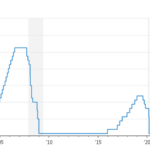Job Hopping, Skill Gaps, and Fierce Competition
According to data from Ho Chi Minh City’s Department of Home Affairs, from January 1 to May 31, the city granted unemployment benefits to 45,620 individuals and provided vocational training support to 875 others. Notably, young workers under 35 years old accounted for 22,383 people, or 49% of the total unemployed. Among them, 9,297 had a university degree or higher.
Compared to the same period in 2024, the city’s unemployment rate decreased by approximately 15%. However, as Ms. Toi pointed out, the labor landscape remains volatile due to the ongoing reorganization of government agencies, post-COVID-19 business restructuring, and digital transformation. These factors not only impact middle-aged workers but also place immense pressure on young workers who are facing increasingly high demands from employers.

Ms. Luong Thi Toi shares insights on the labor market during the press conference.
One of the reasons for high unemployment among young people is the trend of job hopping as they seek a suitable work environment or struggle with career path uncertainty. Ms. Toi analyzed that while today’s youth have more choices than previous generations, they are also more prone to instability, lack soft skills, and struggle to meet the practical demands of the job market.
Competition for jobs is also fierce, as Ho Chi Minh City is home to several prominent universities that produce thousands of graduates each year. Many of these graduates lack practical skills and work experience, which are essential requirements for most employers. The city’s labor market is further impacted by the migration of workers to newly industrialized areas offering better living conditions.
Industries such as textiles, footwear, wholesale, and retail are facing labor shortages, forcing companies to continuously recruit or increase working hours to meet production demands.
Strategies to Retain Employees
Faced with staff shortages, many Ho Chi Minh City businesses have adjusted their employee retention strategies. Some have increased base salaries, improved welfare benefits, provided housing and transportation support, and even offered performance-based bonuses. Others have focused on internal training to enhance skills and foster employee engagement.
“Maintaining a stable workforce not only helps businesses ensure smooth production but also lays the foundation for long-term growth,” emphasized Ms. Toi. “In addition to competitive compensation packages, companies are increasingly investing in training and creating attractive work environments.”

Many businesses are facing staff shortages. Source: VnEconomy.
To facilitate labor supply and demand, the Ho Chi Minh City Center for Employment Services organized 33 job fairs from the beginning of the year to the end of May. These included 21 fairs at the center and unemployment insurance registration sites, as well as 12 fairs held in collaboration with external partners. Through these efforts, 109,860 people received counseling, 16,010 were introduced to job opportunities, and information was collected from 89,991 job seekers and 11,107 businesses regarding their labor needs.
Currently, 199 enterprises have registered for recruitment, with a total demand of 20,920 positions, mainly in the fields of unskilled labor, food and beverage, and business management. The center also collaborates with organizations specializing in overseas employment, providing counseling to 258 individuals and receiving 19 registration dossiers.
Forecast for the Third Quarter: Rising Demand for Skilled Labor
Based on current data, the Ho Chi Minh City Department of Home Affairs predicts that the labor market in the third quarter of 2025 will continue to face challenges, especially in the fields of trade, services, and key industries. There is a growing demand for highly skilled and specialized workers, reflecting the economy’s shift towards modernization and sustainability.
The Ho Chi Minh City Center for Employment Services is working to enhance its software systems, standardize information channels for recruitment and job searches, and develop industry-specific job boards to improve the efficiency of connections between businesses and job seekers.
The Youth Unemployment Crisis: Navigating a Challenging Job Market
In recent times, Hanoi has witnessed a concerning trend among young workers aged 25-34, who have the highest unemployment rate. This issue stems from various factors, predominantly attributed to contract expirations or mutual agreements between employers and employees, voluntary contract terminations by employees, and an increase in business downsizing or closures.
The Stock Market Conundrum: Experts Advise Caution as VN-Index Surges in Banking and Real Estate Sectors.
The Vietnamese market has demonstrated remarkable resilience, bouncing back from the challenges posed by the US government’s tariff policies. This recovery can be largely attributed to the strong performance of the VN30, particularly the real estate and banking sectors, which have played a pivotal role in driving the market’s resurgence.
Crafting Compelling Content to Counteract Trade Tax Turbulence
The US tariff policy and the subsequent reactions from other countries are expected to significantly impact the Vietnamese labor market, particularly those directly employed by exporting enterprises. This may result in labor reductions or shifts, causing a potential disruption to the country’s employment landscape.





















